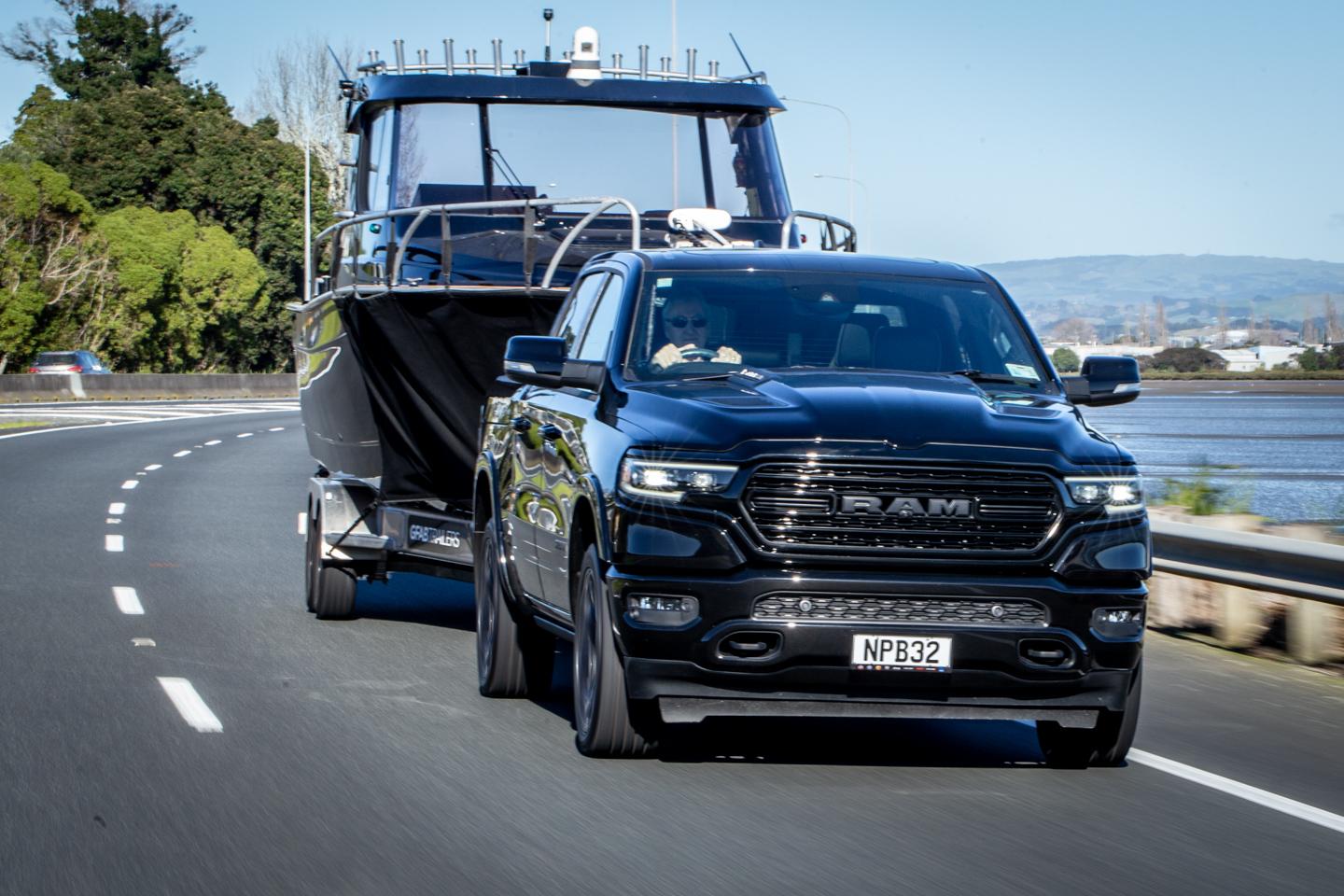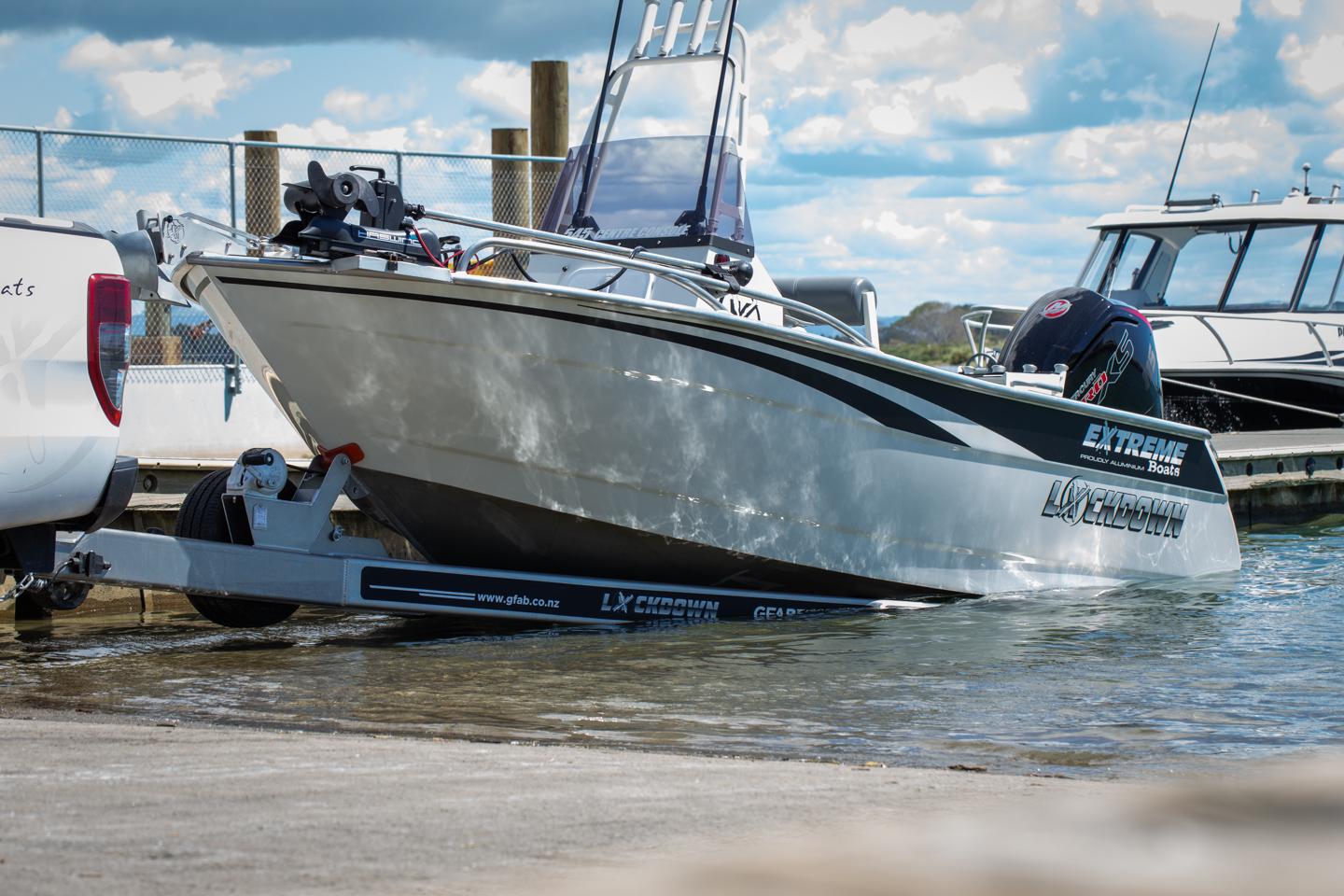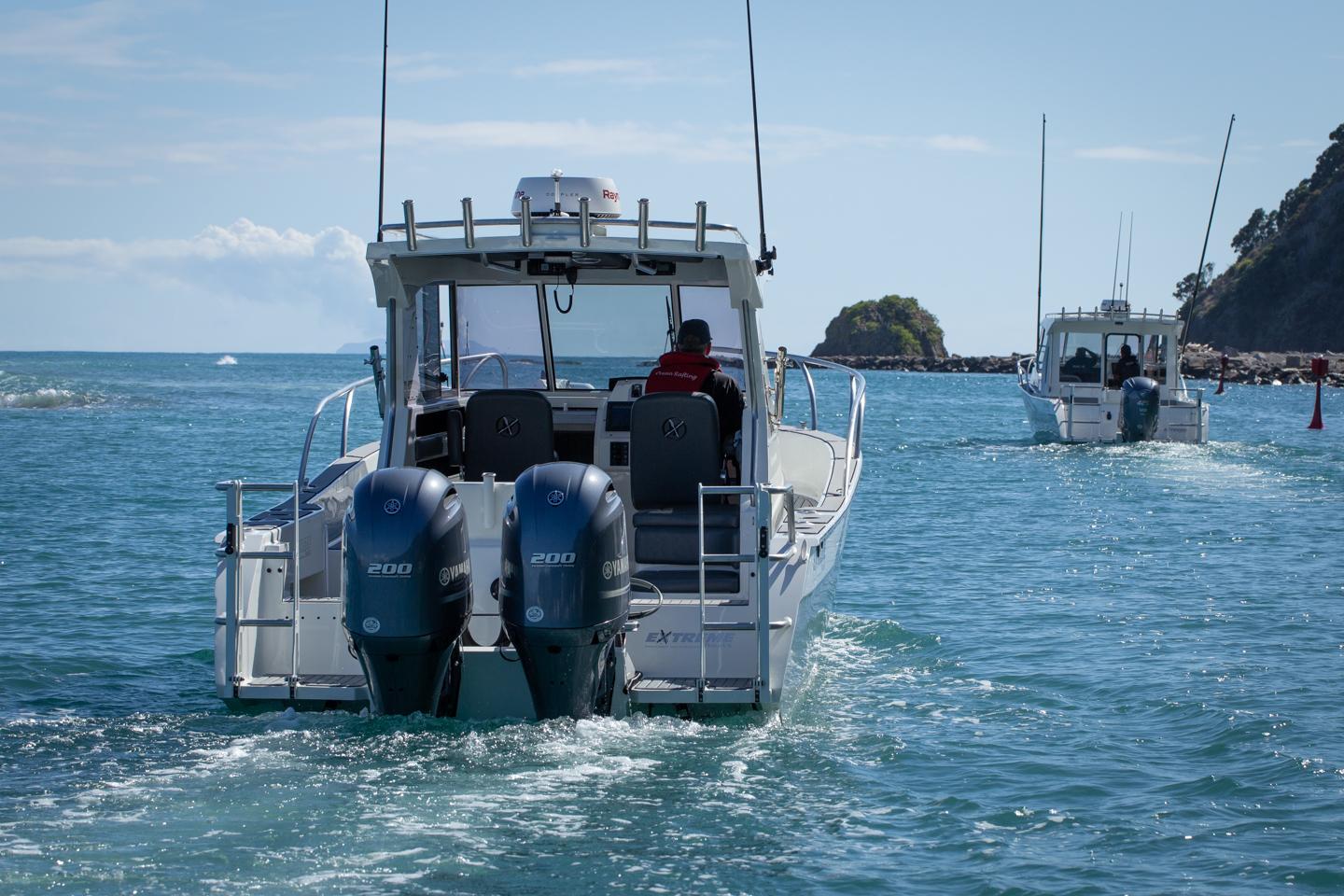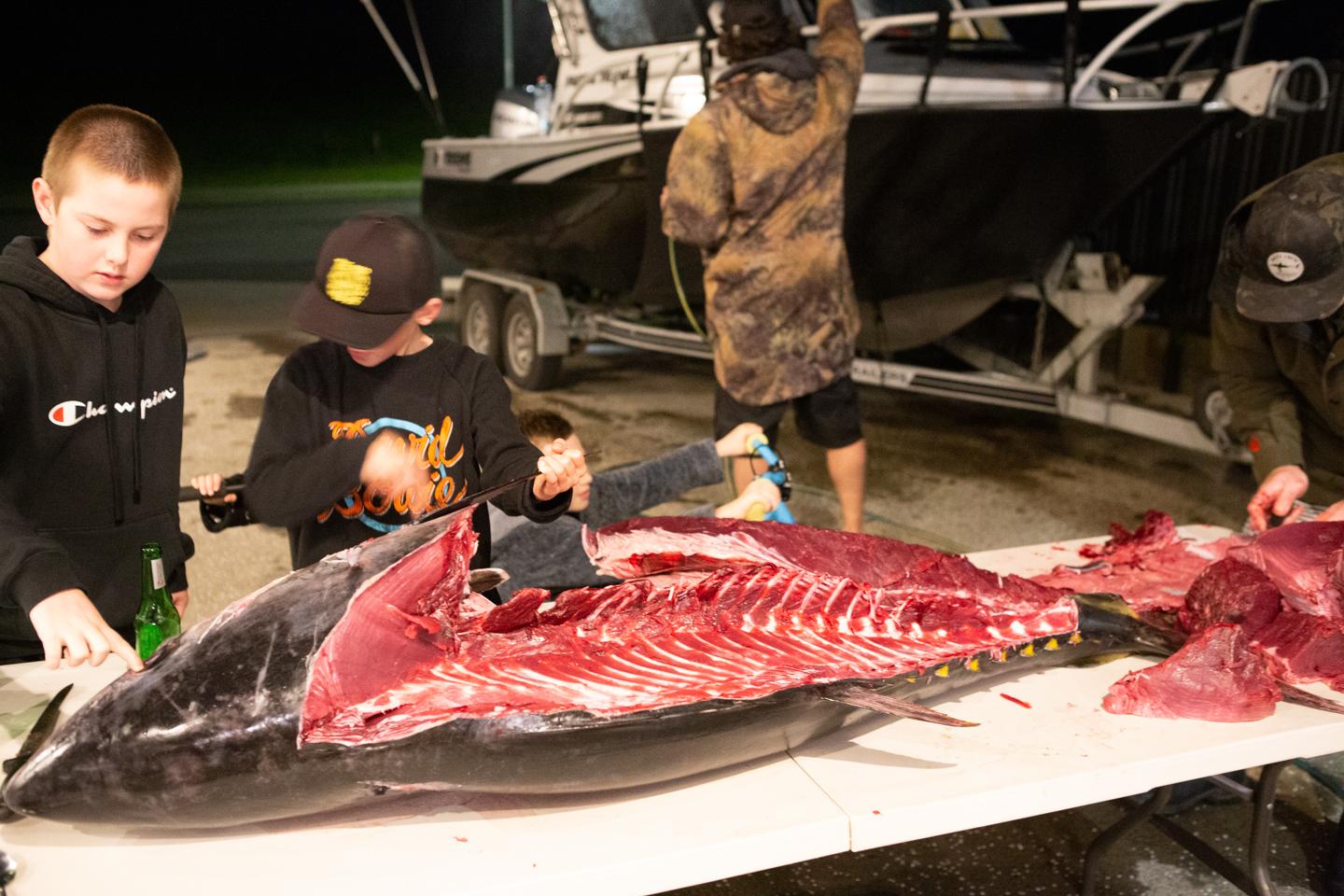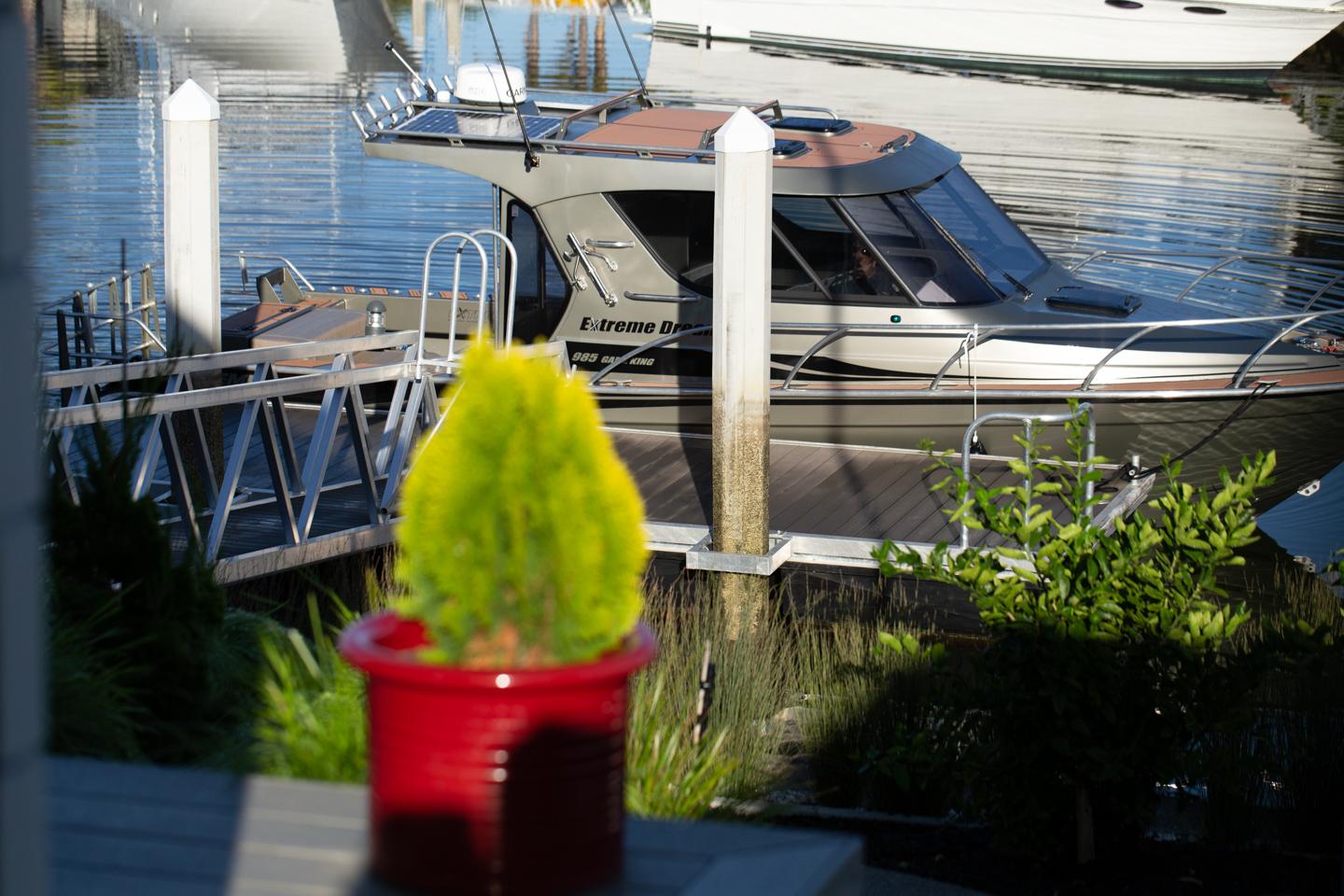Owner care
Below are a few things that need to be done to look after your Extreme Boat to keep it in the best condition possible for years to come and tips to maximise your enjoyment in your Extreme.
Towing your Extreme
Before you can use your Extreme you need to get it to the water and a few things need to be checked when your boat is hitched on.
- Outboard motor is tilted up to avoid leg dragging
- Prop flag is on
- Rear tie downs are on to hold aft end securely down and stop boat sliding back if there was an issue with the front winch rope/chain
- Clicker on the trailer winch is "engaged" so the winch rope cannot be pulled out
- Safety chain is connected from the trailer to the towing eye of the boat
- Tow hitch is seated and locked onto the tow ball correctly and locking pins/hitches in place
- Safety chain/chains are attached from trailer to vehicle or brake away cord attached
- If you have a Sport Fisher model we recommend you DO NOT tow with the Bimini cover, or clears on. Remove the canvas, or fold rocket launcher back to reduce windage while towing which will stress the bimini frame.
Extreme Boats take no responsibility for the way boats are loaded and trailered while traveling on land. All towing weights advertised are approximate due to variation between packages and are based on a standard specification boat with no fuel/ water or gear. Boats should always be fueled as close to the launching destination as possible to avoid extra weight while trailering.
Launching your Extreme
When you get to the boat ramp you intend to launch it pays to pull over before lining up and ensure the below things are done
- Ensure there is enough life jackets for everybody on board
- Bungs in (3 in most transoms plus other bungs in the underfloor storage bins and forward well beneath the cabin squabs) Bung placement varies between models so please make yourself familiar with their location before going on the water.
- Prop flag off
- Rear tie down strops taken off
- Fenders in place if tying up beside
- Bow and stern ropes in place
- Battery isolation switch turned on
- VHF and AM/FM aerials are up
- Make sure D shackle will undo and if not get an appropriate tool ready
Heading out
Before releasing the ropes ensure everyone is wearing their lifejacket, the engine is running and the headlights are turned off on the tow vehicle. Once departing the wharf it pays to stow the ropes away along with the fenders and call the Coastguard to let them know your plans for the day. Ensure you know what the forecast is for the day and are familiar with tide times (especially if crossing bars) Adhere to any speed restrictions within harbours/rivers and ensure you are on the correct side of the channel. It is also good practice to ensure your crew is holding on before speeding up and make sure there are no loose items that may move around when underway. Once clear of the harbour or river mouth the opportunities are endless, and waiting to be enjoyed. Below are a few things to think about before heading out.
- Familiar with the local tides and marine forecast
- All bungs are in
- Lifejackets for every person on board
- At least two forms of communication on the boat (VHF, cell phone)
- Extra safety gear on board (flares, sea anchor, EPIRB etc)
- Everybody is familiar how to start/drive the boat if necessary
Cleaning and storing your Extreme
After an enjoyable day on the water your Extreme will need a good wash to help keep it looking great and going well for years to come. After unloading the catch and gear, remove the bilge bung and underfloor storage bin bung and give everything a good wash down with fresh water which will loosen any salt, followed by a washdown with an appropriate boat wash. Avoid using household products as they can be highly Alkaline, and look for a low PH soap such as AWL wash, Meguiars Flagship, Crystal Boat Soap to name a few. Ensure to use a soft bristled brush or wash mitt and rinse as you go to wash all the sudds away. Avoid scrubbing the corner perspex windows and just rinse with the hose and wipe down later with a microfibre cloth and suitable cleaner such as Vuplex. It is also important to give the inside of the cabin a good wipe down as a lot of salt can still end up inside the cabin after a windy day on the water. Check with your local dealer regarding the best practices for flushing your outboard. After everything is washed down ensure the battery isolation switch is OFF, and the boat is stored as level as possible with the bow slightly up. It is very important to NEVER store your boat full of petrol due to gas expansion in the tank that can occur on warmer days. We also recommend that you remove the buoyancy bungs in the transom to let the buoyancy chambers breath and also check that there is NO water in them.
Mooring/berthing of boats
If your Extreme is to spend extended periods of time stored on the water extra measures need to be taken which are the owners responsibility. Antifoul must be applied with regular inspections after applying and re applied as necessary to protect the hull. Correct anodes must also be fitted as per a qualified technicians recommendations and inspected/replaced as necessary. We also recommend that a road cover is fitted to reduce rainwater in the boat during heavy downpours, and an appropriately sized auto bilge must be fitted with a solar charging system to keep the battery bank topped up. Sea cocks on all through hull fittings below the waterline must also be fitted and turned off while the boat is left on the mooring or in its berth. It must be made clear to the dealer if there is an intention of leaving the boat on water for extended periods of time prior to the build commencing.
Calculating trip fuel
It is recommended to never run your boat lower than 10% of its total fuel tank volume advertised. For example, if you have a 140L tank you should never run it lower than 126L. The advertised tank sizing's do not allow for situations such as boats being filled when not perfectly level which will not allow the fuel tank to be filled completely. Pitch and roll also effect/ restrict the fuel being able to be picked up when the tank level gets low. You should always fuel up on the way TO the ramp and NEVER store a boat FULL of fuel. Calculating trip fuel is best done by resetting the trip fuel on the engine management gauge at the start if a trip after fueling up which will let you know exactly how many litres have been used on a trip. Get in touch with your local dealer to talk you through how to do this is you are unsure. The sender unit reading will give you an idea how much fuel there is in the tank, but as the boat is not always level there will be variation in the reading.
